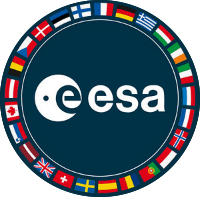ESA - European Space Agency emblem.
Feb 10, 2022
Sea-level rise is arguably one of the most serious consequences of the climate crisis. While using satellite data to monitor how the height of the sea is changing provides critical evidence for decision-making, satellites are also essential to measuring the individual components, such as seawater temperature and glacier melt, that contribute to the overall rise. Confidence in the accuracy of these separate measures is key. ESA-funded research now confirms that the figures match up.
Gorner Glacier melt adds to sea level rise
Global mean sea-level has risen by more than 3 cm per decade since precise satellite measurements began in the 1990s.
A good third of this rise in sea level is down to thermal expansion – as seawater warms, it expands. Nearly two thirds of the rise is because of freshwater being added to the ocean, mainly from the melting of glaciers and from the Antarctic and Greenland ice sheets, but also from the water added to the ocean from land, essentially as a result of groundwater storage depletion.
While we all understand that seas are rising because Earth is getting hotter, scientists need understand exactly what’s going on. They do this by assessing how these different contributions compare with the overall change in sea level – in other words, they assess the sea-level budget.
Global sea-level budget closure
Change in the mass of the global ocean can be assessed by determining the individual contributions from the Greenland and Antarctic ice sheets, the glaciers worldwide and changes in land water storage. Alternatively, it can be measured directly by satellites that observe tiny changes of Earth’s gravitational pull entailed by changes of ice or water masses.
ESA’s Climate Change Initiative (CCI) generates high-quality and continuous space-based records of Essential Climate Variables, including a number of variables related to sea level. The CCI Sea Level Budget Closure Project, which involves a consortium of ten European research institutes, has assessed these records, advanced and extended the analysis of data from satellites as well as from oceanographic measurements and numerical modelling.
The research, led by the Dresden University of Technology and published Earth System Science Data shows how the sum of sea-level contributions assessed on a month-to-month basis matches the total sea-level change observed by satellites.
Martin Horwath, lead author, said, “Assembling this coherent picture of sea-level and ocean-mass budgets not only required advanced datasets from satellite Earth observation and modelling. It also required the experts from various disciplines to arrive at a common framework.
“Part of our results went into the recent Sixth Assessment Report of the IPCC. Now we provide the full set of time series and their documentation.”
ESA’s Jérôme Benveniste noted, “This is the fruit from the continuity in research and development on Earth observation data analysis enabled by ESA’s Climate Change Initiative. The beauty of the results lies in the coherence of all the CCI Essential Climate Variables, which, when well-prepared and assembled, give a precise picture of our climate and its trend. The work doesn’t stop at this impressive milestone, there are still questions to be answered regarding the climate variability and its evolution.”
The results are in line with previous studies, but they gain additional confidence through the advancements of the data analysis involved. These advancements include the consistent approach to specifying the accuracy limits throughout all elements of the sea-level budget.
However, the results also call for further improvements in understanding the satellite measurements and the physical processes in question. For example, slow deformations of the solid Earth beneath the ocean affect satellite observations, and these effects need to be separated from changes within the ocean itself.
Benjamin Gutknecht from Dresden University of Technology added, “It is important to be transparent about how results depend on some choices of methodology. For example, our satellite-based numbers on ocean-mass change changed somewhat when we improved the way to account for mass displacements in the solid Earth. More research is needed for the distinction between different processes of mass transports in the Earth system.”
Related links:
CCI Sea Level Budget Closure Project: https://climate.esa.int/en/projects/sea-level-budget-closure/
Dresden University of Technology: https://essd.copernicus.org/articles/14/411/2022/
Sixth Assessment Report of the IPCC: https://www.ipcc.ch/report/ar6/wg1/
Space for our climate: https://www.esa.int/Applications/Observing_the_Earth/Space_for_our_climate
Image, Video, Text, Credits: ESA, CC BY-SA 3.0 IGO/Planetary Visions (credit: ESA CCI Sea Level Budget Closure Project/Planetary Visions).
"Warm" regards, Orbiter.ch


